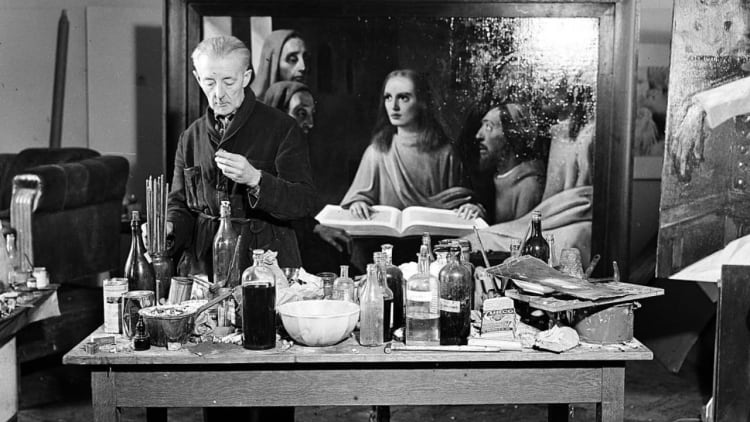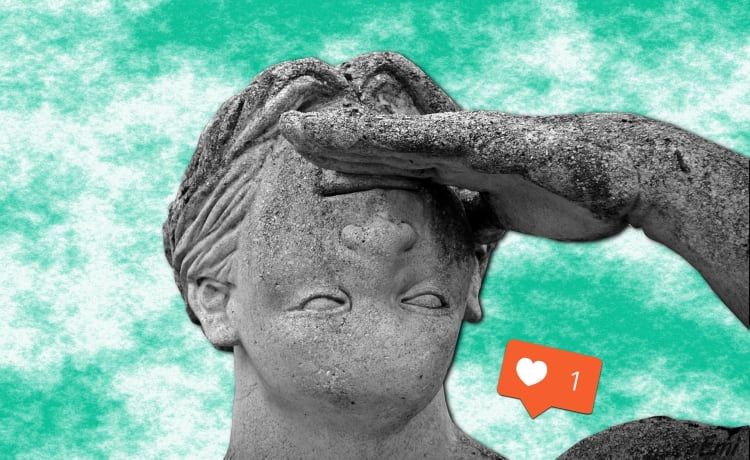Vilhelm Hammershøi (1864-1916) is one of the great masters of Danish painting of the late 19th and early 20th century. Hammershøi is known for his empty interiors with a quiet, hazy atmosphere.
His palette is almost entirely in monochrome greys, producing works that are conducive to meditation. Discover 5 things to know about the Danish painter.

1 - He joined the Copenhagen Academy of Fine Arts at a very young age
Vilhelm Hammershøi was born on 15 May 1864 into a wealthy family with an interest in art and culture. At the age of 8 he started taking drawing lessons.

Frederikke Hammershøi, the artist's mother, Vilhelm Hammershøi, 1886
At the age of 15, he entered the Copenhagen Art Academy and until he was 20, he took drawing and painting classes with Niels Christian Kierkegaard as his master.
To complete his training, the young artist took private lessons in the Kunstnernes Frie Studieskoler (Free Studios), which were set up in protest against the rigid teaching offered by the Academy at the time.
2 - In 1889, he presented four oil paintings at the Paris World Exhibition
In 1887, the Danish painter travelled through Europe, notably to the Netherlands and Belgium. Two years later, he discovered Paris on the occasion of the Universal Exhibition, where four of his works were exhibited.
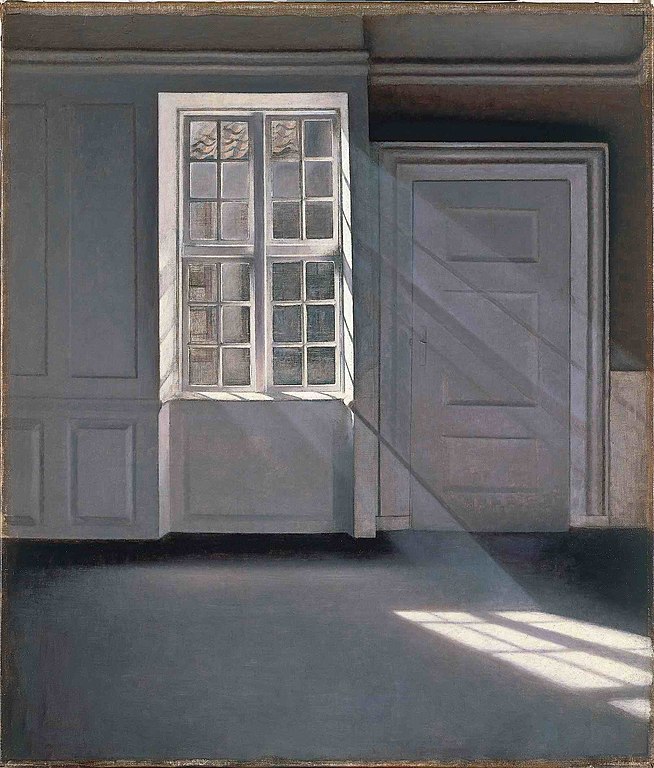
Dust Motes Dancing in Sunbeams, Vilhelm Hammershøi, 1900
During his stay in Paris, Hammershøi discovered the French impressionists and contemporary painters, but this had no concrete impact on his painting.
3 - He was a counter-current painter
The Dane who clearly positioned himself against the painting of the Danish Golden Age and against the painting taught at the Copenhagen Academy was always on the fringe of the artistic approaches of his time.
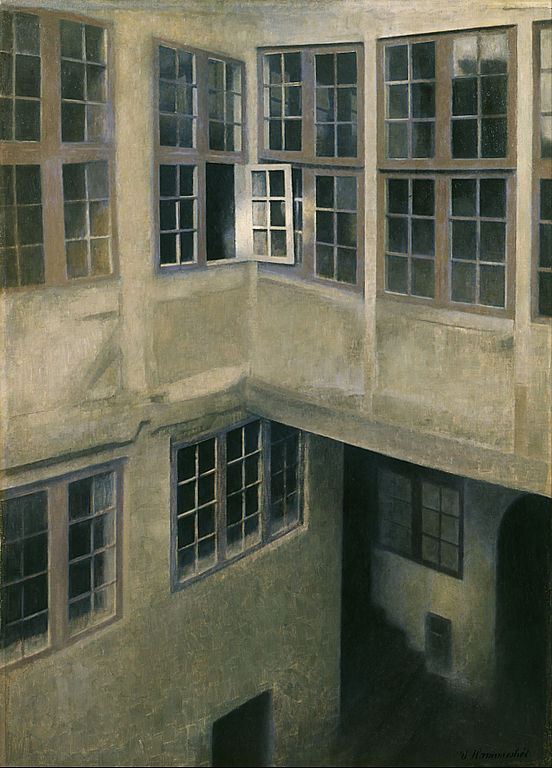
Interior of Courtyard, Vilhelm Hammershøi, 1899
Hervé Gauville helps us to better situate this mysterious painter in the history of art:
"There is, in the attitude of this austere man, a closure to his contemporaries which contributes to his being excluded from the debates of his time. To take the measure of this character today, one would have to admit that he is to Denmark what Giorgio Morandi is to Italy and Balthus to France, that is to say, splendid dinosaurs, individuals not out of time, but on the margins of their time."
Read also: Louisiana Museum, an incredible art collection in the heart of Denmark
4 - He is known for his interior paintings of windows and people from behind
In 1891, he became engaged to Ida Ilsted. She played an important role in his artistic development.
He painted her tirelessly. Her female figure became indispensable in his interior paintings.
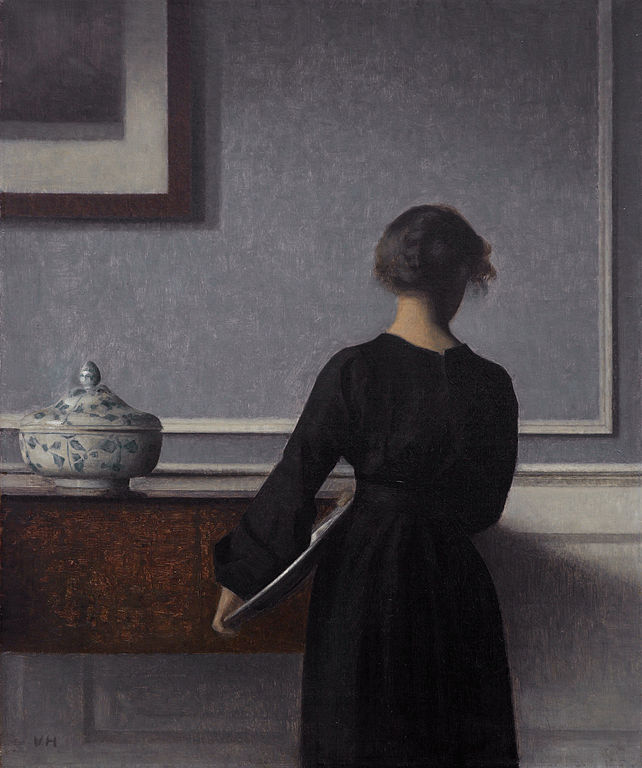
Interior with Young Woman Seen from the Back, Vilhelm Hammershøi, 1903-1904
In the past, we knew the front and profile portraits, but Hammershøi invented the back portrait, a trademark that gives a mystical and universal side to his paintings.
5 - Hammershøi was noticed and supported by a French art critic
During his passage in Paris, the French critic Théodore Duret saluted his artistic work.
Later, the Austrian writer Rainer Maria Rilke wrote an essay about the painter, whom he considered a master of painting.
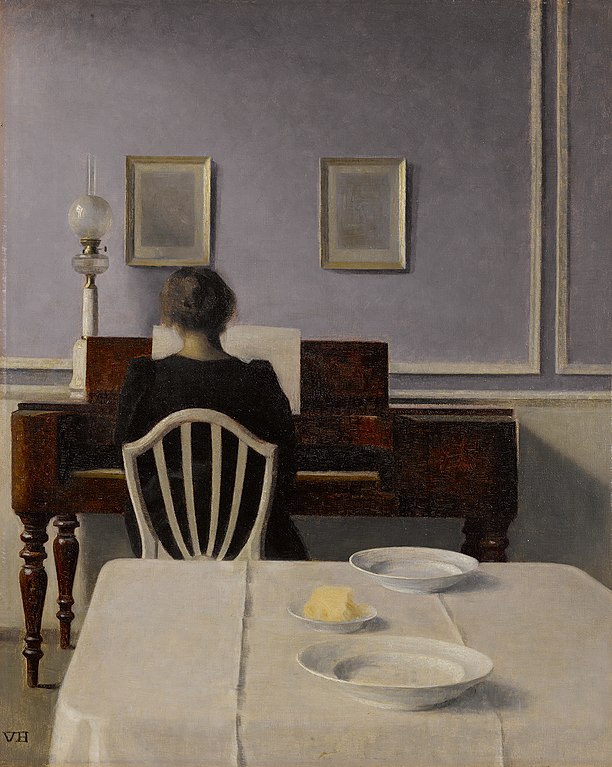
Interior with Woman at Piano, Vilhelm Hammershøi, 1901
Art critics often draw parallels between Hammershøi's paintings and those of Johannes Vermeer or Edward Hopper: "When we find figures in Hammershøi's interiors, they are like Hopper's figures, totally silent and static, entirely submissive to these immaculate rectilinear spaces." Poul Vad.


